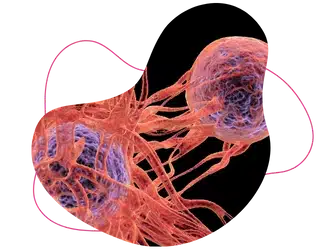Every year on September 8th, the world observes World Cystic Fibrosis Day, a day dedicated to raising awareness of one of the most common inherited disorders and honoring the resilience of those who live with it. Cystic fibrosis (CF) affects more than 100,000 people worldwide, with thousands of new diagnoses each year.

Cystic Fibrosis and the Genetic Roots of Disease
The condition is caused by mutations in the CFTR (Cystic Fibrosis Transmembrane Conductance Regulator) gene, which controls the transport of chloride and sodium ions across cell membranes. When the protein encoded by this gene is defective or absent, mucus in the lungs, pancreas, and other organs becomes abnormally thick and sticky. This leads to persistent respiratory infections, digestive complications, sinus problems, and male infertility, severely impacting quality of life (Dickinson & Collaco, 2021).
Personalized Medicine: Genetics Guiding Stem Cell Therapies
Over the past decades, the outlook for people with CF has improved significantly. Advances in newborn screening, specialized care centers, and mutation-targeted therapies have raised the median life expectancy to about 44 years (Veit et al., 2016). Still, CF remains a lifelong challenge requiring ongoing, coordinated management. Since the disease arises from mutations in the CFTR gene, the type of mutation not only influences symptom severity but also determines which therapies may be most effective. For this reason, genetic testing has become central to modern CF care.

At DNA GTx, CF-related mutations are detected through Whole Exome Sequencing (WES), providing precise insights into the genetic basis of the disease. This comprehensive approach supports personalized care and helps determine eligibility for innovative treatments. At Stemwell Institute, these genetic insights are combined with advanced stem cell–based strategies, offering patients access to therapies designed to target the disease at its cellular level.
From Gene Therapy to Stem Cells: A Shift in Strategy
Traditional approaches have focused largely on symptom relief and supportive care. Today, however, stem cell research represents one of the most exciting frontiers in CF treatment. Unlike conventional therapies, stem cell–based approaches have the potential to repair or replace damaged lung tissue and restore proper CFTR function (Piro, Rejman, & Conese, 2008). At Stemwell Institute, research and clinical innovation are directed at translating these promising laboratory discoveries into practical, patient-centered therapies.
Induced Pluripotent Stem Cells: Rebuilding Healthy Airways
Among the most promising strategies are induced pluripotent stem cells (iPSCs), which can be generated from a patient’s own skin or blood cells. After correction, these cells can be transformed into airway epithelial cells capable of repairing and regenerating damaged tissue. Beyond their role in tissue replacement, iPSCs provide a platform for patient-specific drug testing, which helps design safer, more effective treatments (Pollard & Pollard, 2018). Stemwell Institute actively explores these pathways, working to turn scientific progress into meaningful improvements in patient care.
Mesenchymal Stem Cells and Exosomes: Repair Through Communication
Another innovative approach involves mesenchymal stem cells (MSCs) and their secreted exosomes. These tiny vesicles act as biological messengers, carrying therapeutic molecules into diseased cells. In laboratory models, MSC-derived exosomes have been shown to activate CFTR function and improve airway health (Villamizar et al., 2021). This discovery illustrates the power of stem cells not only as a source for replacement cells but also as a means of delivering targeted repair signals. Stemwell is at the forefront of developing such regenerative solutions, ensuring they reach patients in the most effective and safe way possible.
Amniotic Stem Cells: Restoring Lung Integrity
Further research has demonstrated that human amniotic stem cells, when co-cultured with CF airway cells, can restore epithelial integrity and improve chloride transport. By reinforcing the lung’s natural barrier, these cells help reduce infections and improve respiratory function (Carbone et al., 2014). At Stemwell Institute, this type of research is integrated into a broader strategy to create therapies that both repair tissue damage and strengthen long-term lung health.
Toward a Stem Cell–Driven Future Without Cystic Fibrosis
The future of cystic fibrosis treatment is being shaped by the integration of genetics, personalized medicine, and stem cell research. By focusing on repairing damaged cells and regenerating functional tissue, stem cell–based approaches represent a shift from managing symptoms to addressing the disease at its core.
On this World Cystic Fibrosis Day, it is important not only to raise awareness but also to emphasize the progress being made in regenerative medicine. Stemwell Institute stands at the intersection of cutting-edge research and patient care, committed to transforming the potential of stem cell science into real solutions. For patients and families looking beyond traditional therapies, Stemwell Institute offers access to innovative treatments that bring new hope for a healthier future.
References
- Carbone, A., Castellani, S., Favia, M., Diana, A., Paracchini, V., Di Gioia, S., Seia, M., Casavola, V., Colombo, C., & Conese, M. (2014). Correction of defective CFTR/ENaC function and tightness of cystic fibrosis airway epithelium by amniotic mesenchymal stromal (stem) cells. Journal of Cellular and Molecular Medicine, 18(8), 1631–1643. https://doi.org/10.1111/jcmm.12303
- Dickinson, K. M., & Collaco, J. M. (2021). Cystic Fibrosis. Pediatrics in Review, 42(2), 55–67. https://pmc.ncbi.nlm.nih.gov/articles/PMC8972143/
- Piro, D., Rejman, J., & Conese, M. (2008). Stem cell therapy for cystic fibrosis: current status and future prospects. Expert Review of Respiratory Medicine, 2(3), 365–380. https://doi.org/10.1586/17476348.2.3.365
- Pollard, B. S., & Pollard, H. B. (2018). Induced pluripotent stem cells for treating cystic fibrosis: State of the science. Pediatric Pulmonology, 53(S3), S12–S29. https://doi.org/10.1002/ppul.24118
- Veit, G., Avramescu, R. G., Chiang, A. N., Houck, S. A., Cai, Z., Peters, K. W., Hong, J. S., Pollard, H. B., Guggino, W. B., Balch, W. E., Skach, W. R., Cutting, G. R., Frizzell, R. A., Sheppard, D. N., Cyr, D. M., Sorscher, E. J., Brodsky, J. L., & Lukacs, G. L. (2016). From CFTR biology toward combinatorial pharmacotherapy: expanded classification of cystic fibrosis mutations. Molecular Biology of the Cell, 27(3), 424–433. https://doi.org/10.1091/mbc.E14-04-0935
- Villamizar, O., Waters, S. A., Scott, T., Grepo, N., Jaffe, A., & Morris, K. V. (2021). Mesenchymal Stem Cell exosome delivered Zinc Finger Protein activation of cystic fibrosis transmembrane conductance regulator. Journal of Extracellular Vesicles, 10(3), e12053. https://doi.org/10.1002/jev2.12053
Ready to learn more about stem cell therapy?

At Stemwell, our team of doctors are highly skilled in successfully supporting thousands of people with a range of stem cell treatments. If you would like to learn more about stem cell therapy you can contact us with any questions, or apply today to check your eligibility.

